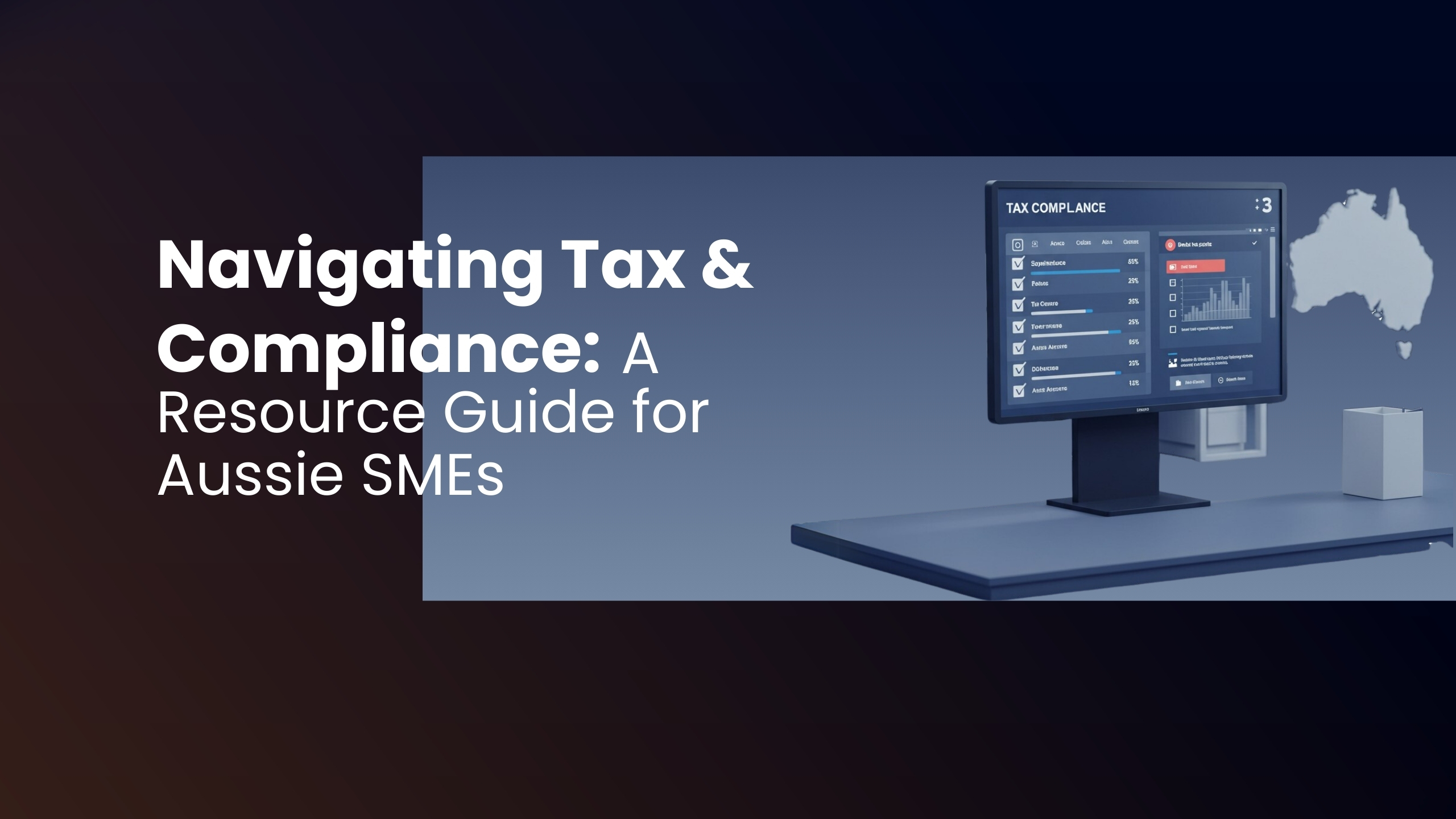Navigating Tax & Compliance: A Resource Guide for Aussie SMEs
For Australian SMEs, navigating tax and compliance is critical—not only to avoid costly penalties but also to build a strong foundation for growth. With evolving regulations from the Australian Taxation Office (ATO) and local authorities, having an up‑to‑date resource guide can be a game-changer. This guide provides verified tips, real-world examples, interactive resources, and expert insights to help you manage GST, income tax, payroll, and other regulatory requirements effectively.
- Understanding Your Australian Tax Obligations
Australian SMEs face multiple tax obligations, including:
a. Goods and Services Tax (GST):
Businesses with a turnover of $75,000 or more must register for GST. Keeping precise records of GST on sales and purchases is essential for timely Business Activity Statement (BAS) lodgment.
b. Income Tax:
Correctly reporting business income and claiming eligible deductions is crucial for optimizing taxable income.
c. Payroll Tax & Superannuation:
Ensure compliance with PAYG withholding requirements and superannuation contributions (currently 11.5% as of 2025).
A Melbourne-based café successfully streamlined its GST tracking using cloud‑accounting software, resulting in a 15% reduction in BAS lodgment errors and improved cash flow.
- Record-Keeping and Financial Reporting
Accurate record keeping is the backbone of compliance.
a. Maintain Records:
Keep all financial documents (invoices, receipts, bank statements) for a minimum of five years.
b. Financial Reporting:
Regularly prepare profit and loss statements, balance sheets, and cash flow statements to monitor your business’s financial health.
Actionable Tip:
Utilize cloud‑based systems like Xero or MYOB to automate record‑keeping and generate real‑time reports.
- Best Practices for Compliance
Implement strategies that help ensure ongoing compliance:
a. Automate Processes:
Use technology to automate BAS preparation, invoicing, and payroll processing.
b. Regular Reviews:
Schedule quarterly financial reviews to detect and correct discrepancies early.
c. Employee Training:
Regularly train staff on compliance best practices and updates in tax legislation.
“A proactive approach to compliance not only minimizes penalties but strengthens your overall business strategy,” advises a CPA from CPA Australia.
- Leveraging Technology and Professional Resources
Modern digital tools can simplify compliance tasks.
a. Accounting Software:
Tools like Xero and MYOB have built‑in features designed for Australian tax laws.
b. Professional Assistance:
Engaging a qualified accountant or tax advisor can ensure you navigate complex regulations efficiently.
c. Government Resources:
Utilize free guides and tools available on business.gov.au and the ATO website for the latest updates.
- Funding and Support Resources
Access additional support to ease the compliance burden:
a. Free Downloadable Tools:
Get our comprehensive tax & compliance checklist and business planning templates specifically tailored for Aussie SMEs.
b. Workshops & Webinars:
Attend free online webinars hosted by local small business support organizations to stay current with regulatory changes.
- Real-World Success Stories
Learning from other Aussie SMEs can provide invaluable insights. For example, a Sydney retail store used professional tax advisors to restructure their accounting processes, reducing compliance errors by 20% and increasing overall efficiency. Local startup networks like StartupAus have numerous case studies demonstrating the value of early and proactive compliance management.
“Staying on top of tax obligations has been crucial for our growth. We’ve seen firsthand how proper compliance can transform business operations,” says a mentor at StartupAus.
- Expanded FAQs
Q1: What are the key tax obligations for Australian SMEs?
A1: SMEs must manage GST (for turnovers above $75k), income tax, and payroll obligations including superannuation contributions.
Q2: How long should financial records be maintained?
A2: Financial records must be kept for at least five years, as required by law.
Q3: Which accounting software is best for compliance?
A3: Cloud‑based software like Xero and MYOB are popular among Aussie SMEs for their integration of compliance features.
Q4: How can I handle multi-jurisdictional tax issues if my business operates across states?
A4: Consult with a local tax advisor and utilize software that can handle regional variations such as state-specific payroll tax and land tax requirements.
Q5: What should I do if I face an ATO audit?
A5: Maintain accurate records, regularly review your financial reports, and consult with a qualified accountant to prepare for an audit.
Q6: How can SMEs benefit from government support programs?
A6: Leverage resources from business.gov.au and the ATO, which offer grants, tax incentives, and compliance guides specifically for small businesses.
Key Takeaways
- Understand Your Obligations: Be clear about GST, income tax, and payroll requirements.
- Maintain Accurate Records: Use reliable cloud-based systems to streamline record-keeping and reporting.
- Embrace Technology: Automate compliance tasks and leverage digital dashboards.
- Seek Professional Help: Engage with qualified accountants and tax advisors.
- Utilize Free Resources: Download checklists, templates, and attend webinars to stay informed.
- Learn from Success: Real-world case studies and expert insights reinforce the value of proactive compliance.
Conclusion
Navigating tax and compliance is critical for the success and sustainability of Aussie SMEs. By understanding your obligations, leveraging modern technology, and accessing professional and government resources, you can simplify complex regulatory requirements and focus on growing your business. Use our free tools, interactive webinars, and expert insights to ensure your business stays compliant and thrives in today’s competitive market.

